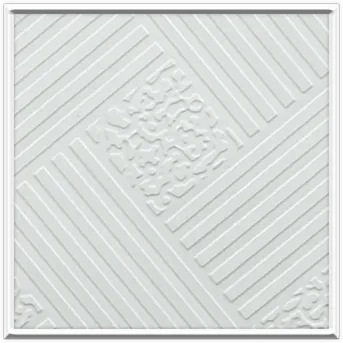Nov . 19, 2024 01:11 Back to list
Design Considerations for Ceiling Access Panels in Modern Architectural Applications
Ceiling Access Panel Design Essential Considerations for Functionality and Aesthetics
Ceiling access panels play a crucial role in the functionality of modern buildings, providing easy access to essential utilities such as electrical wiring, plumbing, and HVAC systems
. Their design is often overlooked, yet it greatly impacts both the efficiency of maintenance operations and the aesthetic integrity of a space. When considering ceiling access panel design, several key factors should be taken into account.1. Purpose and Location The design of a ceiling access panel starts with understanding its purpose. Panels intended for frequent access should prioritize ease of use, whereas those that are rarely used can afford to be more discreet. The location of the panel also influences its design; for instance, panels in high-traffic areas require robust materials and secure locking mechanisms to withstand frequent use.
2. Size and Dimensions Selecting the appropriate size is vital. The panel must be large enough to allow easy access to the area behind it but small enough to blend with the existing ceiling design. Standard sizes vary, but custom dimensions can be engineered to cater to specific architectural nuances. It’s essential to balance between accessibility and maintaining a seamless ceiling appearance.
3. Material Selection The choice of material directly affects both durability and aesthetics. Common materials include steel, aluminum, and plastic, each offering different benefits. Steel panels provide robust security and durability but may require finishing to prevent rust. Aluminum panels are lightweight and resistant to corrosion; however, they can be less robust under heavy impacts. Plastic panels are often used for lightweight applications but may not be suitable for areas requiring heavy-duty access.
ceiling access panel design

4. Aesthetic Integration A ceiling access panel should blend with the overall design of the ceiling. Options for concealed or flush-mounted panels help maintain a sleek appearance, avoiding unsightly interruptions in architectural lines. Moreover, the color and finish of the panel can be customized to match the surrounding ceiling material, contributing to a cohesive visual environment.
5. Installation and Maintenance Proper installation is critical to ensure the panel operates smoothly and securely. It should be fitted to allow for easy removal and reinstallation, facilitating straightforward maintenance in the future. Incorporating features such as hinges can improve accessibility while ensuring the panel remains secure when closed.
6. Safety and Compliance Finally, it is essential to comply with local building codes and safety regulations. This involves ensuring that panels do not impede fire safety measures and are properly installed to prevent any accidental opening that could lead to hazards.
In summary, ceiling access panel design encompasses a variety of considerations that every designer or builder should prioritize. By balancing functionality with aesthetics, one can create access solutions that enhance both the operational efficiency and visual appeal of a space.
-
Quality Ceiling Trap Doors & Access Panels | Easy & Secure AccessNewsAug.30,2025
-
Durable Ceiling T Grid Systems | Easy InstallationNewsAug.29,2025
-
PVC Gypsum Ceiling: Durable, Laminated Tiles for Modern SpacesNewsAug.28,2025
-
Pvc Gypsum Ceiling Is DurableNewsAug.21,2025
-
Mineral Fiber Board Is DurableNewsAug.21,2025
-
Ceiling Tile Clip Reusable DesignNewsAug.21,2025







